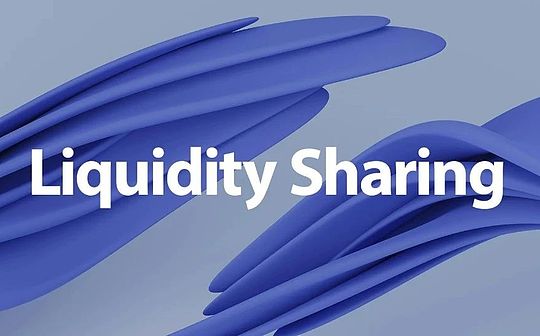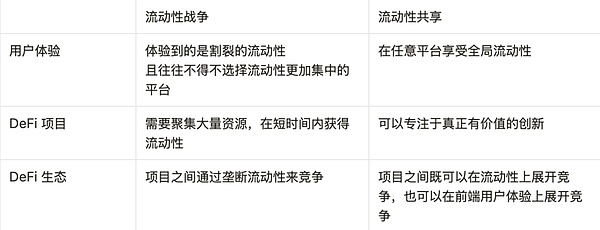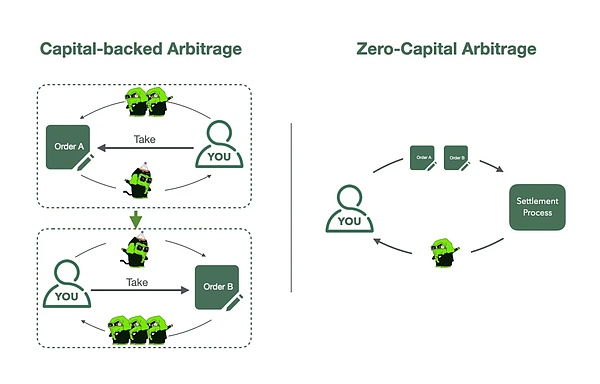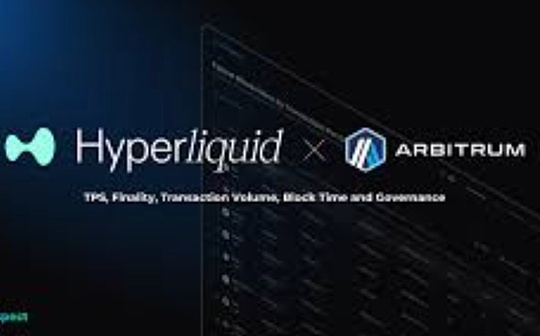
What will happen to the Defi world when there is no liquidity war?
Since the birth of DEFI, the brutal liquidity war has always penetrated.
We have seen that in order to obtain liquidity, many DEFI projects pay a lot of costs or release a large amount of tokens.Some projects have succeeded and obtained market dominance. For example, uniswap, some projects will choose to avoid their edge, establish liquidity advantages in specific categories, and obtain opportunities for survival.Of course, some projects have exhausted all resources, and they are unsustainable and belong to dust.
The cause of liquidity war
Defi liquidity is an area that is easy to go to natural monopolies, which means that liquidity will naturally concentrate on the head protocol.
There is such a logical chain: Defi products with more liquidity will have higher availability, so users will concentrate on the product, and the concentration of users will bring more handling fees to liquidity providers, so they will bring more handling fees, so they willIt’s easier to stay.Conversely, if your products have very little liquidity, the availability of the product will be relatively poor, the user will be reduced, and the income of the liquidity provider is difficult to sustain and eventually escapes.
This is obviously a logic of the Matthew effect.
Because of this, the competition of liquidity is very cruel.If you can’t get a lot of liquidity in a short time, at least get the liquidity advantage in assets in a certain segment, then your DEFI project will be difficult to survive.
If the new Defi project wants to compete for liquidity, it needs to pay a very tragic price.The costs they paid for liquidity are far greater than their investment in product development and technological innovation.This short -sighted tendency will actually be very unfavorable for innovation and development in the DEFI field.
We can reflect on it, is it really necessary?
From liquidity war to the sharing of liquidity
We advocate a new path, that is, the liquidity sharing of cross -protocol.Decentralized finance should be open. This is why it is also known as Open Finance in addition to the name of DEFI.We believe that the liquidity sharing of cross -protocol is deserved, and an ecology should build a unified agreement standard that supports cross -protocol calling liquidity at the beginning.
First of all, when the liquidity can be shared, there is no need to compete for liquidity between the DEFI projects to improve the availability of the product.Even products with less liquidity, users can enjoy global liquidity on it, and their user experience will not be affected.However, the competition of liquidity has not actually disappeared, because it can still catch more fees because of more liquid projects.Therefore, we can think that liquidity sharing actually transforms cruel liquidity war into benign liquidity competition.
Secondly, when the liquidity can be shared, the new DEFI project can survive if only has less liquidity.It does not need to cost huge costs to get a lot of liquidity in a short time.Then the project can use the power of funds and teams for truly valuable innovation, such as improving capital efficiency and improving the matching mechanism.
Third, when the liquidity sharing means that liquidity and front end of the product are actually decoupled, which will bring the project a diversified choice in business models.We use DEX as an example to explain that when the user trades on the DEX platform, the income paid to the platform actually contains two parts, which are front -end usage fees and liquidity use fees.Among them, the front -end usage fee is completely attributed to the platform, and most of the liquidity use fee will be attributed to LP, and a small part will belong to the platform.In other words, the income of the DEX platform can understand that there are two parts, namely the front -end use fee and liquidity use fee.If it cannot be decoupled, the front end of which projects the user uses can only use the liquidity of the project.Under the premise of liquidity sharing, no matter which front end users use, they enjoy global liquidity.This gives users the freedom of the front end, and the project party also gives the project party two options in the business model:
Developers with a platform with traffic, or developers who have the ability to develop a silky front end, can focus on the development of the front end, and the predecessor use fee is the main income.This looks a bit like the business model of polymer, but when it lacks a unified liquidity sharing standard, the polymer needs to develop a very complicated routing protocol. Its core competitiveness is still not the front end, but the intelligence of the routing protocol.
With LP resources and a platform that has the ability to aggregate more funds, you can choose to earn the main use of liquidity.There is no need to invest too much resources in front -end experience optimization.LP with capital strength and development capabilities can even choose a self -built liquidity platform, not to be maided by anyone, and no need to custody to any agreement.
LP, which has strategic management capabilities, can even be customized as a city strategy based on the self -built liquidity platform and is not limited by a unified platform.
>
FusionFi Protocol
Ending liquidity war and realizing liquidity fusion is exactly what the AO ecosystem is promoting FusionFi Protocol (FFP) to do.Through FFP, AO tries to build a healthier Defi ecosystem.
So how does FFP achieve liquidity fusion?
The core of all financial businesses is actually the circulation and processing of bills.FFP defines a unified document data structure.This data structure can express spot orders, options, futures and other contract orders, and can also express loan orders. Therefore, FFP can support a variety of financial trading scenarios.
Taking DEX as an example, anyone can create spot order notes, including AMM (when users initiate a transaction request, AMM can also create a temporary limit order).These bills will enter a bill pool. Anyone can see it and extract the bills that can be matched from the bill pool and submit to the settings processe for settlement.After the settlement was completed, the state of the bill changed, and the parties to the transaction obtained their own rights and interests.
The settlement behavior is atomic. If the settlement fails, the state of the bill will not change, and the parties to the transaction will not generate any actual equity exchange.
This settlement model is very efficient. It can not only settle single bills, or settlement of multiple bills together. It can be a trader who submits settlement or a settlement.This brings some super powers to DEX, such as more jump transactions and principal -free arbitrage.
Multi -jump transactions refer to that when users want to exchange capital C with asset A, but there is no direct liquidity, they can complete the transaction by converting the asset A to asset B and then exchanged to asset C.
The principal -free arbitrage refers to the process of arbitrage in the bill pool that has a spread of spreads and submit them to the settlement center settlement to obtain a spread.
Multi -jump transactions and principal arbitrage are essentially a joint settlement of multiple notes.
>
Source:
https://x.com/permaswap/status/1854212032511512992
Through FFP SDK, developers can implement the vast majority of DEFI protocols at low code.Just as the COSMOS SDK greatly reduces the time of developers to create a blockchain, the FFP SDK has greatly reduced the time required for the AO developer to create the DEFI protocol.
summary
The natural monopoly effect of liquidity has led to the miserable liquidity war between the DEFI protocol, which not only caused the liquidity to be decentralized, damaged the user experience, but also caused the newly -created agreement to invest excess resources.Meaningful innovation.
In order to solve such a situation and accelerate the development of ecological DEFI, the beginning of the ecological development, AO introduced a unified agreement such as FFP cross -project sharing, which not only improved the overall liquidity efficiency of the entire ecology, but also liberated the developerCreativity.Driven by FFP and FFP SDK, the AO ecosystem of DEFI is expected to accelerate and form a healthier financial ecology.








